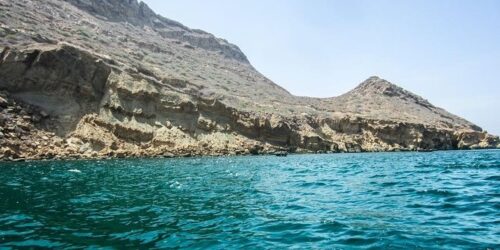Churna Island is facing serious ecosystem degradation due to depletion of precious exotic species of corals due to environmental and anthropogenic damages whereas the Island’s conversion into a Marine Protected Area (MPA) could help overcome the crisis.
Churna Island is one of the scenic and unique adventure sports tourism attractions offering unforgettable experiences of corals and underground water sports. It is facing depletion due to damage bore by the unique marine life existing in the Coastline.
Corals are one of the most productive ecosystems found at thriving scale at different coasts around the globe whereas in Pakistan, they are found in limited and isolated patches around 990 kilometers long coastline of the country, said Senior Technical Advisor to WWF-Pakistan Muhammad Moazzam Khan in an exclusive interaction with APP who had also coauthored an special report highlighting emerging threats to Corals in the area.
He told that apparently corals were healthy in Churna Island where an individual in 2020 observed coral degradation at Mubarak Village on Sindh coast.
In the north-eastern part of Churna Island during October 2020, bleaching was observed whereas in some areas, large patches of bleaching were observed which were limited in some other parts, he added.
There has been complete bleaching of Porites which has turned them totally white indicating that it is already dead because of bleaching. It seems that bleaching is spreading around Chuma Island, however, there is no information and record of similar bleaching from other areas along the coast of Pakistan, he added.
Khan said coral reef is a complete ecosystem and was a dominating one found in Maldives, India, Sri Lanka, Thailand, Australia and other countries around the globe.
He said, “Corals have a great significance due to ecotourism and its protection is necessary both to ensure marine life protection, sustainable growth of environment and preserving a flourishing source of employment through ecotourism.”
Elaborating on the phenomenon of Coral Bleaching, he said negative environmental conditions, such as abnormally warm or cool temperatures, high light, and even some microbial diseases, can lead to the breakdown of the relationship (symbiosis) between coral and zooxanthellae.
“In such conditions, corals expel the algae (zooxanthellae) living in their tissues causing the coral to turn completely white. This is called coral bleaching,” he said.
Although, he said coral do not die immediately and can survive a bleaching event, but begin to starve after bleaching.
“Another coal powered plant is being established for which infrastructure is being developed. Cumulative impacts of these activities may be responsible for coral bleaching in Churna Island. There are plans in place to establish liquid petroleum gas (LPG) terminal at Churna Island which will incur excessive dredging in the area. If such facilities are established at Churna Island, its impacts will not be confined only to coral bleaching but it will wipe out coral from the area,” he warned.
Khan mentioned that Churna Island in the past few years became a major attraction for recreational purposes particularly for snorkelling and SCUBA diving.
A number of tour operators and SCUBA diver clubs offer services for providing underwater tourism in the area.
“It is estimated that about 500 to 1500 people from Karachi and other areas visit Churna Island weekly (especially on weekends) for underground water sports,” he said.
“There are a few groups which lack trained guides, therefore, the amature divers do not care about the sensitive nature of corals and trample or disturb them. There have been reports of many unprofessional SCUBA divers and snorkelers which trample on sensitive coral surfaces,” he added.
“Pollution is also increasing in the area of Churna Island because of the Industrial activity which is evident from floating garbage in the area. Similarly effluents from the industries established in the area can be an extra burden on the delicate coral ecosystem,” he said.
In his report, Moazzam Khan said the damage could be stopped and repaired through declaration of Churna Island as a Marine Protected Area (MPA).
Once declared, he said as a MPA, industrial activities would be controlled as well as streamlined uncontrolled tourism in the area. “There is also a need to keep a vigil on the process of bleaching and in case of any major increase, effective mitigation measures are required to be taken,” he said.







